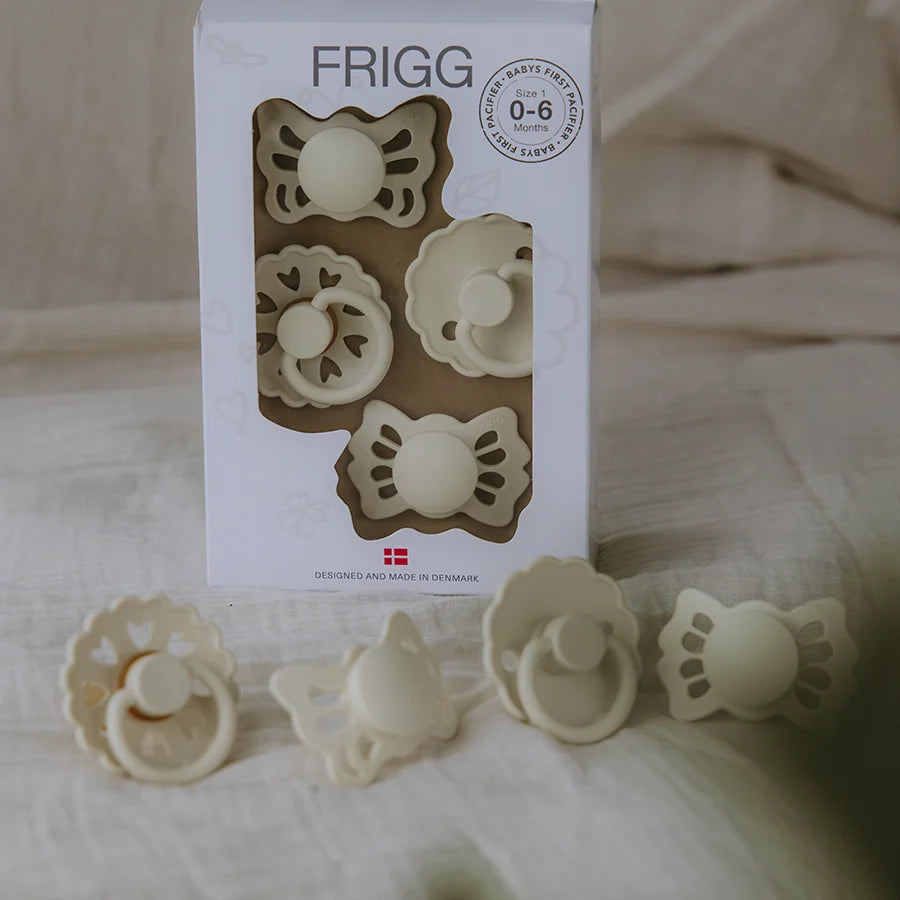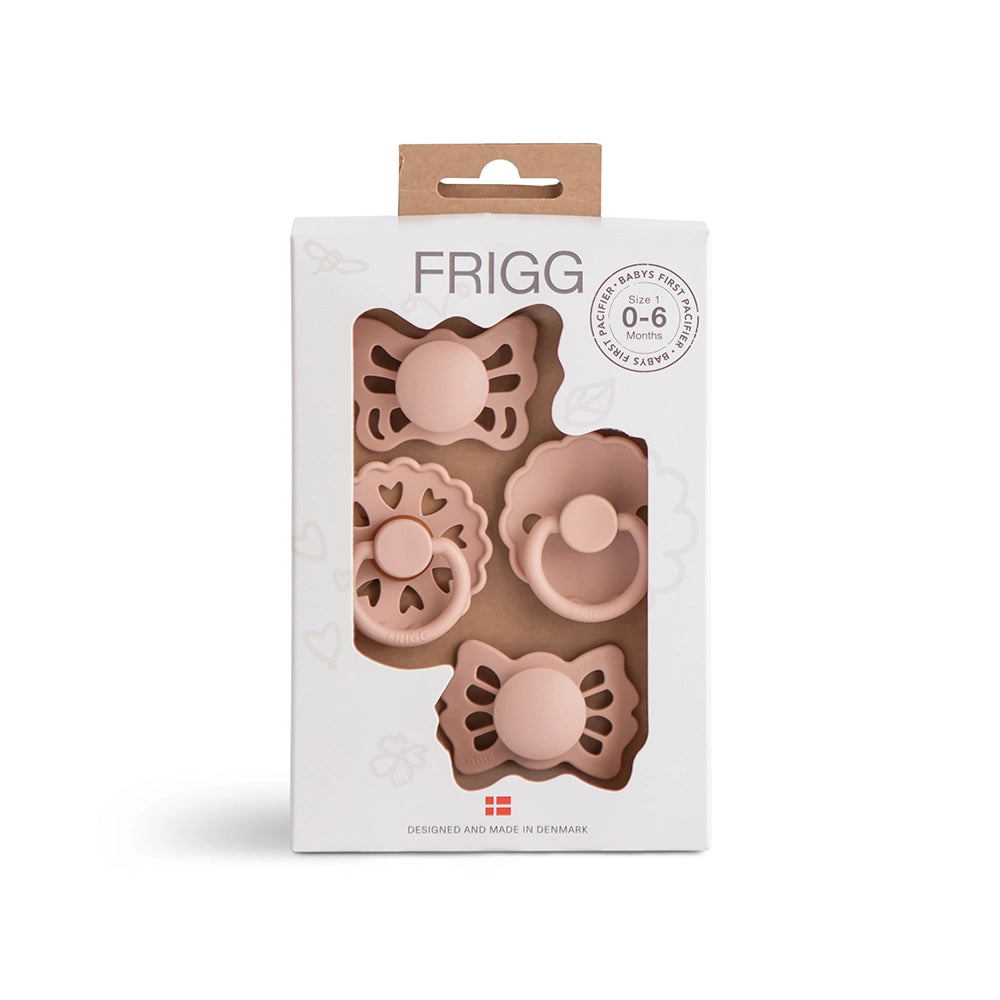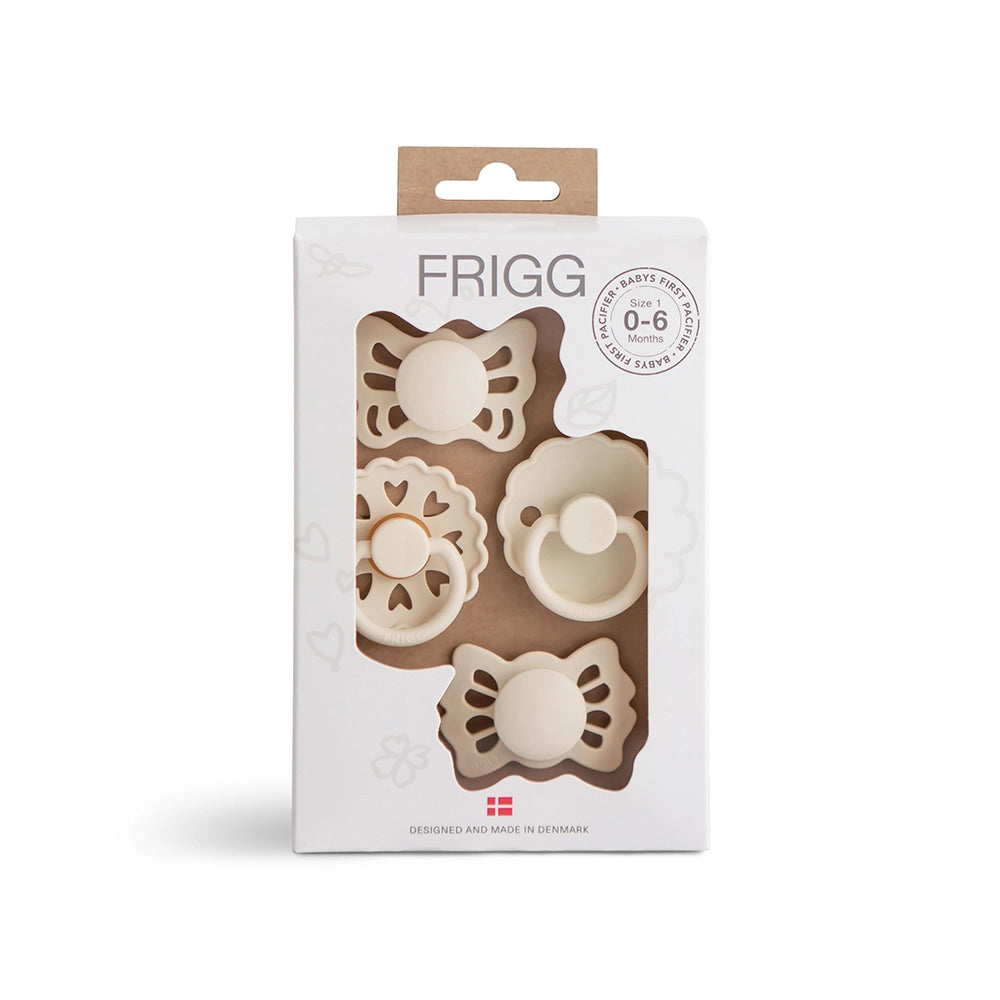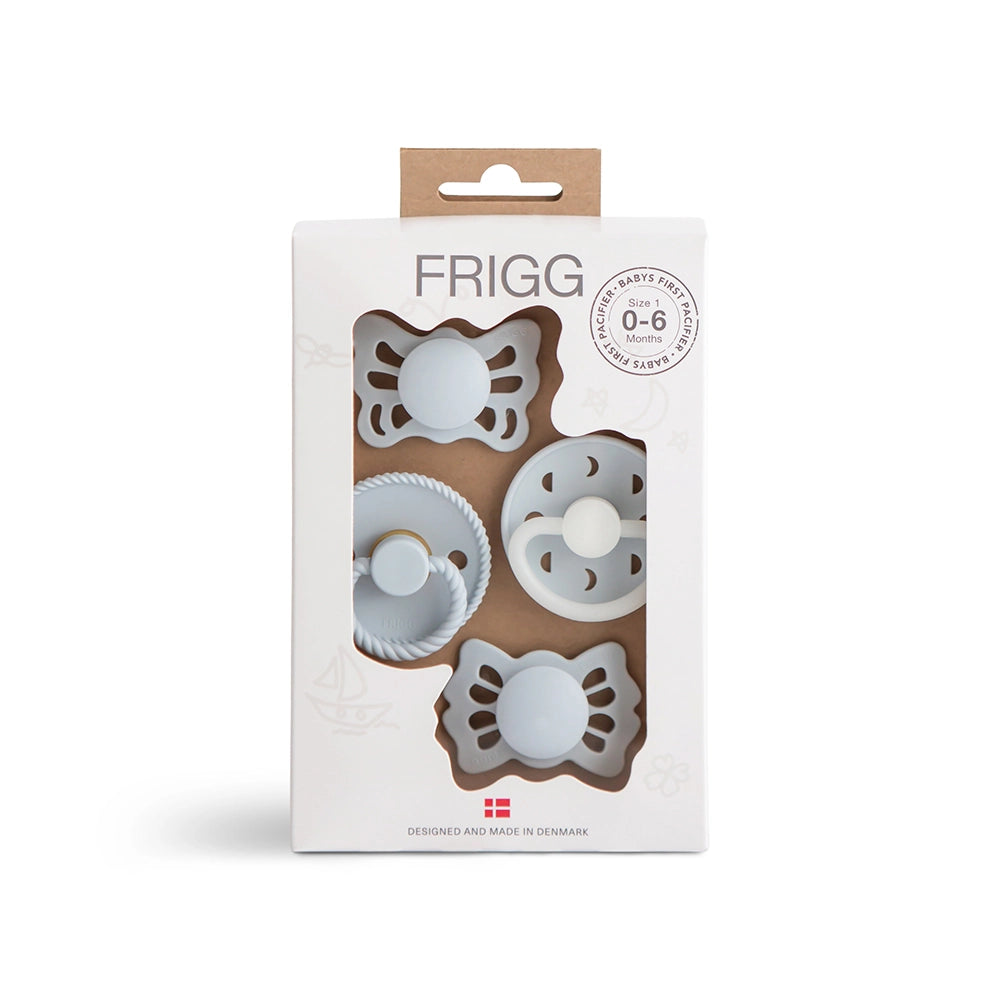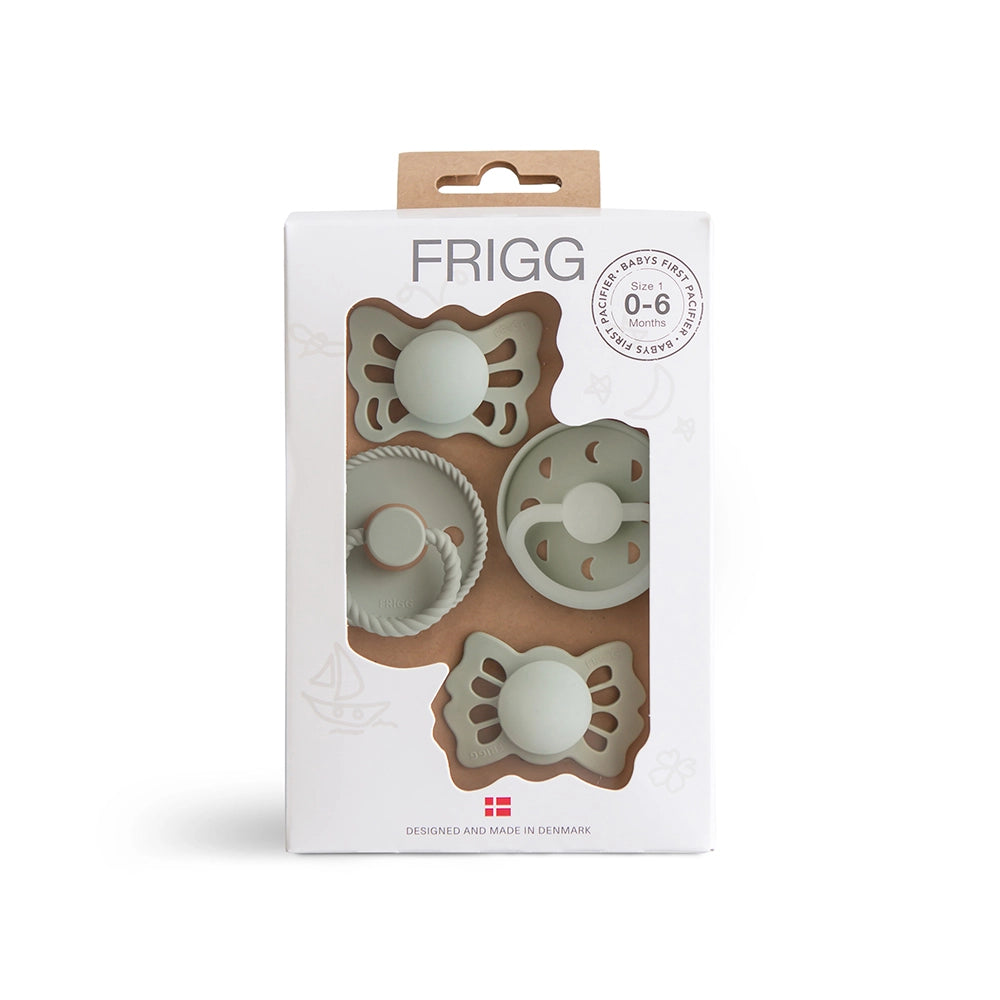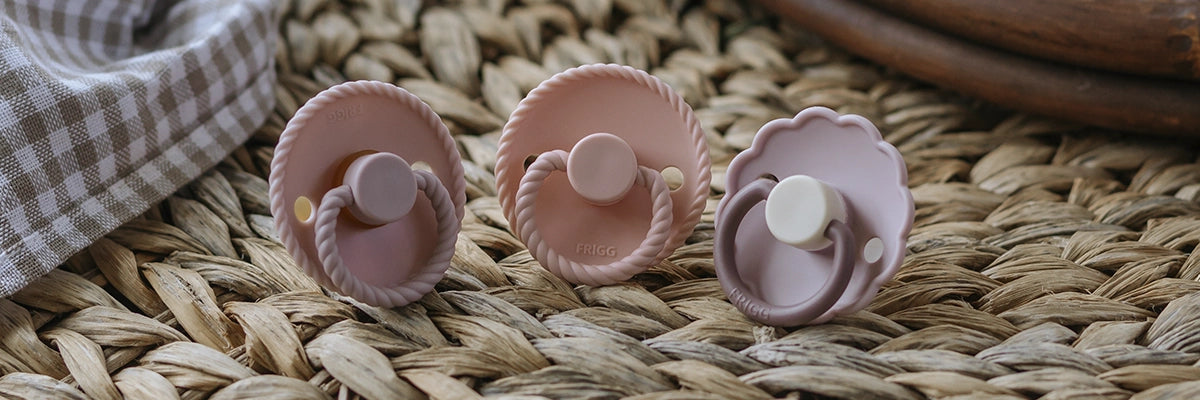Ordering
When will my order ship?
Our team needs 1-2 business days to pack and ship your full order. For larger items, we ask that you allow 3-4 business days. Orders placed after 13:00 CET on Friday — or over the weekend — will ship on the next business day.
Where do you ship to?
We ship to the following countries. Please note international delivery times will vary depending on location and may attract import costs.
- Austria
- Belgium
- Bulgaria
- Croatia
- Czech Republic
- Denmark
- Estonia
- Finland
- France
- Germany
- Greece
- Hungary
- Ireland
- Italy
- Latvia
- Lithuania
- Luxembourg
- Netherlands
- Poland
- Portugal
- Romania
- Slovakia
- Slovenia
- Spain
- Sweden
I have a question about my order, who can I talk to?
Please use the contact form on the Contact Us page to send us your queries or use the one below.
Product
What is the difference between Round, Symmetrical and Anatomical Pacifiers?
Round:
The round nipple is the most traditional pacifier shape. It closely mimics the mother’s breast and supports a natural sucking technique. This makes it ideal for breastfed babies, especially if pacifier use starts early. It helps reduce nipple confusion and allows for an easy switch between breast and pacifier.
Symmetrical:
This teardrop-shaped nipple is flattened and designed to be reversible – meaning it can’t be inserted the “wrong” way. Its flatter neck puts less pressure on the baby’s palate and gums, making it a gentle choice that supports oral development.
Anatomical:
The anatomical nipple is curved to match the shape of the baby’s mouth. It offers the gentlest fit and helps distribute pressure evenly across the palate, gums, and jaw – reducing the risk of pacifier-related dental issues.
How are the product materials sourced?
We source all our product materials ethically and in an environment-friendly manner. Most of the items are sourced locally to help other small businesses and support local artists.
Why did my child’s pacifier break? Is it a defect?
We understand how worrying it can be when a pacifier shows signs of wear or damage - especially when it seems to happen “suddenly.” But in most cases, what may look like a product defect is actually a common (and natural!) result of teething behavior in older toddlers.
We’ve examined many returned pacifiers and found a clear pattern:
Most cases of “broken” pacifiers happen when children are approaching 2.5 – 3 years old and start to experience tooth and gum discomfort. This leads them to instinctively bite, chew, or gnaw on their pacifier - often on the nipple, lock, and shield.
Here’s what we usually see:
- Tiny bite marks or irregular cuts on the silicone nipple
- Chisel-like marks on the plastic lock (especially on models like Daisy)
- Scrape or scribe lines on the pacifier shield from biting, grinding or scraping their teeth along the shield
Silicone is soft and safe for soothing - but it’s not made to withstand strong biting. For children who bite, even gently, damage can occur in just a few weeks.
What can you do?
If your child shows this behavior, we recommend:
- Switching to natural rubber nipples, which are slightly more resistant to biting
- Trying our Lucky or Butterfly models, which have smoother, less “biteable” lock shapes
- Retiring pacifiers once biting becomes a habit - for safety reasons, pacifiers should never be used as a chew toy.
You can read more in our blog post: If your child bites through the FRIGG pacifier
We’re always happy to look into any concerns and guide you toward the best choice for your child’s age and stage.
How accurate are the colors shown in your photos?
The colors shown in our product photos on the product detail pages are highly accurate. But please note that there are small variations in lot-batches of a few products due to which the colors will have slight variations.
How can I see what size the pacifier is?
If you look carefully, you can see that the size of the pacifier is written on the nipple (the part close to the shield).
How come you don't produce FRIGG pacifiers in Size 3?
We recommend that you wean off your child’s pacifier habit no later than the age of 3, which is the reason why we don’t produce FRIGG pacifiers in size 3. Long-term pacifier use can result in dental problems, but if your child stops using pacifier at the age of 3, the teeth affected by pacifier use will have time to self-correct.
My child is 18+ months old, can they still use your pacifiers?
Yes, our FRIGG pacifiers in size 2 can still be used after the age of 18+ months. However, we recommend that you wean off your child’s pacifier habit by the age of 2-3 to avoid dental problems.
Read more on this topic in our blog post "How To Wean Baby Off Of Pacifier".
Can FRIGG Pacifiers in Size 2 be used by newborns?
Yes, they definitely can. We actually experience that many newborns prefer a size 2 as their first pacifier. All children are unique and have different preferences regarding pacifiers; our pacifier sizes are guiding, so if your newborn child prefers a size 2 over a size 1 there is absolutely nothing wrong with that.
Which pacifier nipple do you recommend for breastfed babies?
We are recommending the round nipple (FRIGG Designs: Daisy, Rope, Moon Phase, Night, and Fairytale), especially if your baby starts using a pacifier early. This is because babies use the same sucking technique on the round pacifier as when breastfeeding. The fact that the sucking technique is the same prevents nipple confusion from occurring and makes it much easier to switch between breast and pacifier.
Read more on this subject in our blog post “When to introduce your child to FRIGG pacifiers”.
Do pacifiers cause dental problems for children?
We understand that many parents worry about pacifier use as it can be challenging to wean off a child’s pacifier habit which can lead to dental problems.
Long-term pacifier use can lead to dental problems such as open bite, buck teeth, crossbites, and changes to the roof of the mouth. The longer your child uses a pacifier, the more likely it is going to need orthodontic treatment when it is older.
But if you wean off your child’s pacifier habit no later than the age of 3, the affected teeth have time to self-correct.
Why is my child's new pacifier smaller than the old one?
Fresh FRIGG natural rubber pacifiers often look smaller simply because natural rubber softens and stretches with use. Older nipples can expand by several millimetres, so a newly unpacked one will feel noticeably firmer and “smaller” in comparison.
Our blog post “Why your new FRIGG pacifier is smaller than your old one” will tell you everything you need to know about the subject.
Have you noticed the four little slanting lines inside the nipple?
Some of you may wonder if these lines are a matter of a defect nipple, and the clear answer is NO. The lines are simply a part of the nipple design. We always strive to make our pacifiers stand out on the pacifier market, and that also includes our nipple design.
Returns
What is your return policy?
Please refer to the Delivery & Returns page for our return policy or login to account.frigg.com.
My item arrived damaged. What should I do?
We take the utmost care in our packaging and delivery and rarely items may be damaged in transit. If your item does arrive damaged, let us know by sending us a message via our contact page.
Payment
What sort of payments do you offer?
At FRIGG we offer the following payment solutions:
- VISA
- MasterCard
- Google Pay
- Apple Pay
Safety & Certification
Why is it necessary to replace the pacifiers every 4 - 8 weeks?
For hygienic and safety reasons, it’s important to replace your child’s pacifiers every 4 to 8 weeks. Over time, pacifiers can accumulate bacteria, and frequent use may lead to visible signs of wear such as tooth marks or cracks on the nipple. If you notice bite marks, we recommend beginning the weaning process, as pacifiers are made for sucking- not chewing. You can learn more about when and why to replace your FRIGG pacifier in our blog post “When to replace your FRIGG pacifier”.
Are all your products really BPA, PVC and phtalate free?
Yes, the idea of FRIGG is built upon creating pacifiers without any harmful chemicals.
You can read more about FRIGG's suppliers here.
You can also read more about keeping your child safe from harfumful substances here.
Wholesale
How can I become a FRIGG Retailer?
Click here to visit our Wholesale page on our website to fill out our application on becoming a FRIGG retail partner.
